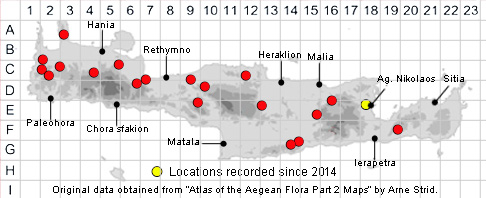SPECIES DESCRIPTION
PAPAVER APULUM
Family and Genus:- See- PAPAVERACEAE/Sect. PAPAVER
Common Names:- None
Homotypic Synonyms:- None
Meaning:- Papaver (L) Poppy.
Apulum (L) From Apulia, S Italy
General description:- Ascending to erect annual
Stems:-
1) 10-55 cm, bristly throughout.
Leaves:-
1) (1-)2-3-pinnatipartite, slightly setose.
2) Basal, with elliptical to obovate, ultimate lobes.
3) Cauline, with linear ultimate lobes.
4) Pedicels, appressed-bristly.
Flowers:-
1) On long, appressed-setose pedicels.
2) Buds, nodding, ellipsoid to globose, sparsely setose.
3) Petals, 6-35 mm, pale brick-red, without a distinct basal blotch, but darkening
towards the base.
4) Filaments, clavate.
5) Anthers Violet.
Fruit:-
1) Capsule, 6-12 x 4-5 mm, ellipsoid, with ± appressed setae below and patent
setae above; setae thin, 1-2 mm long.
2) Stigmatic disc, with 4-6 rays, distinctly vaulted between the rays.
Key features:-
1) Capsule, Lower part, with ± appressed setae, mature stigmatic disc strongly
vaulted between rays.
2) Stigmatic disc, with 4-6 rays, distinctly vaulted between the rays.
3) Petals, without a basal black spot.
Habitat:- Fallow fields and roadsides, but also in dry open shrubby vegetation,
gorges, screes an often coniferous woodland 0-800 m.
Distribution:- S Italy, Sicily, Crete, Balkan Peninsula and the Aegean region.
Somewhat scattered across Crete, not common.
Flowering time:- Mar-May.
Photos by:- Steve Lenton
